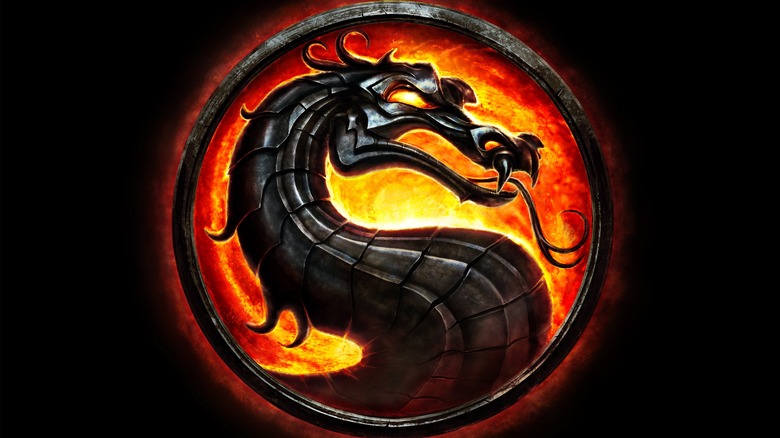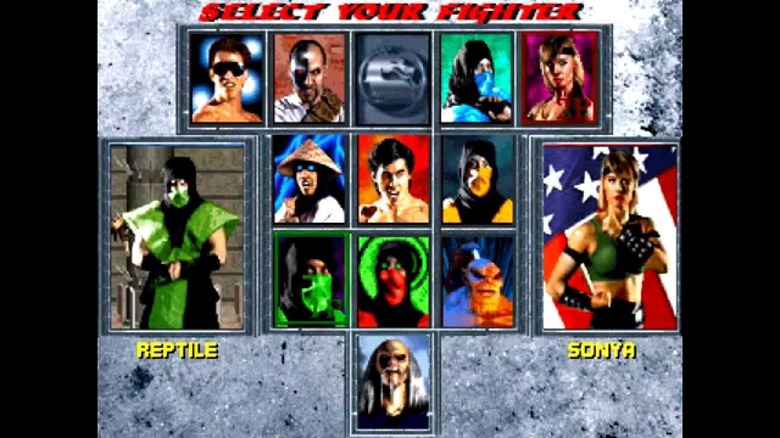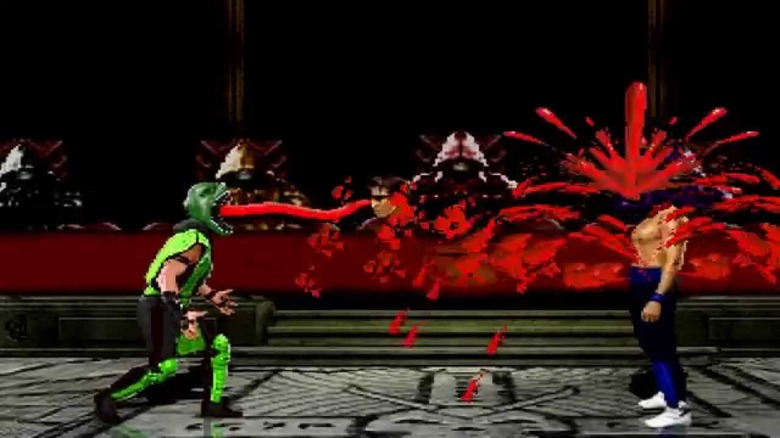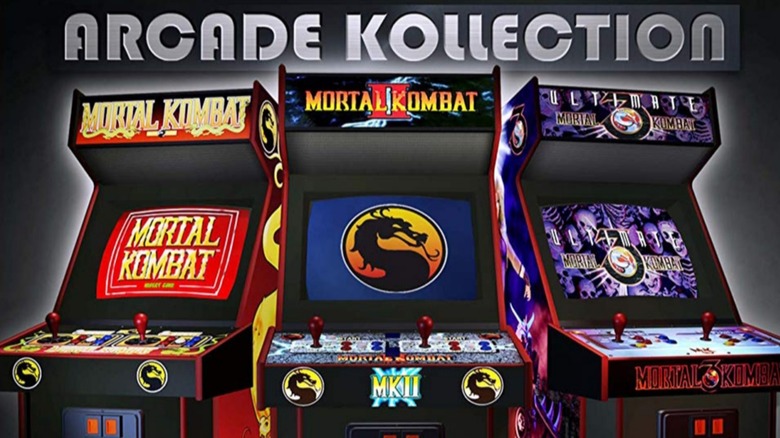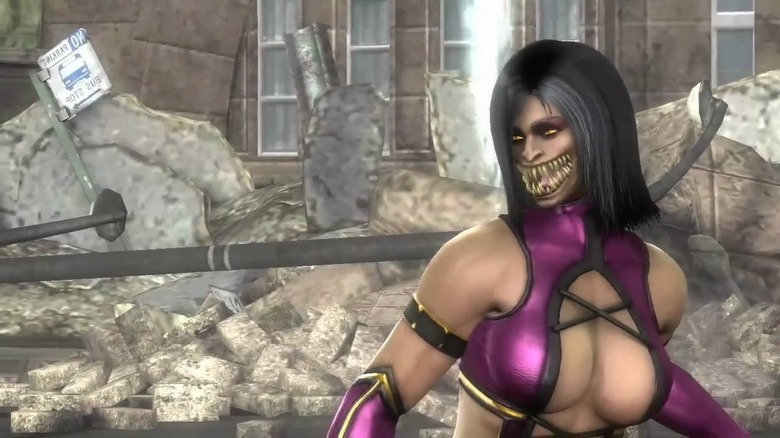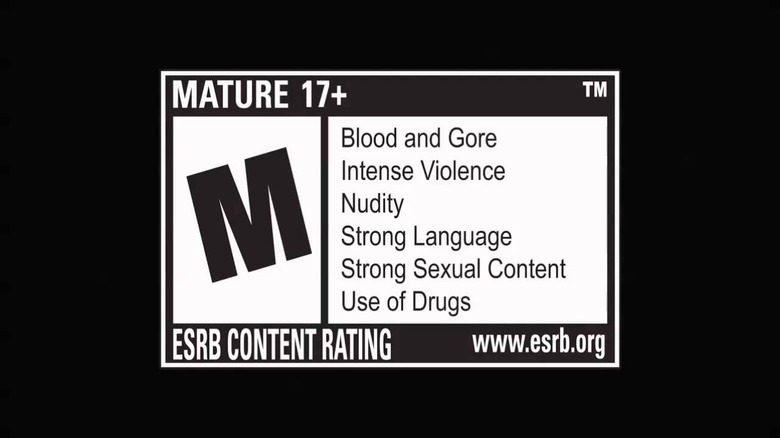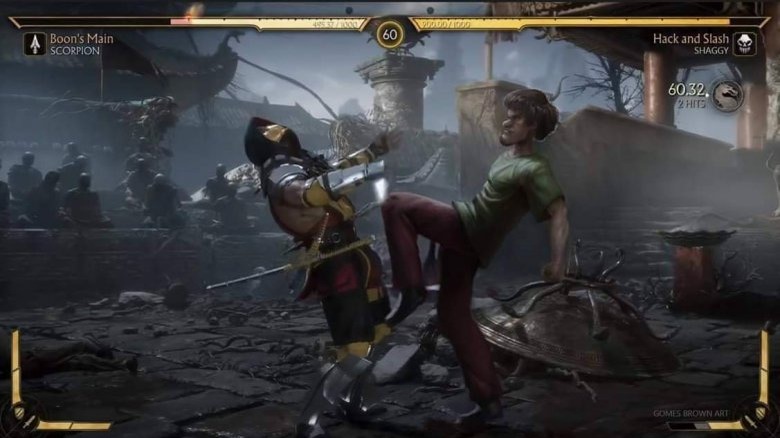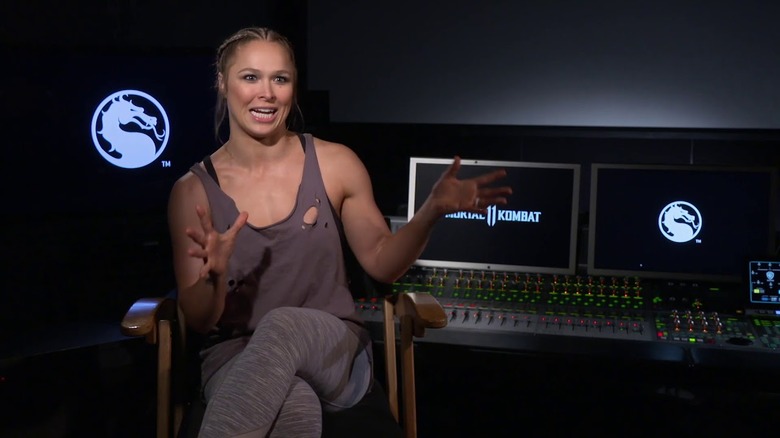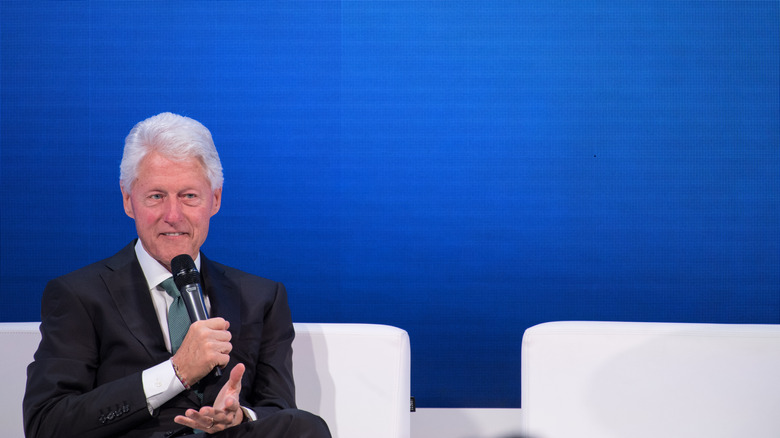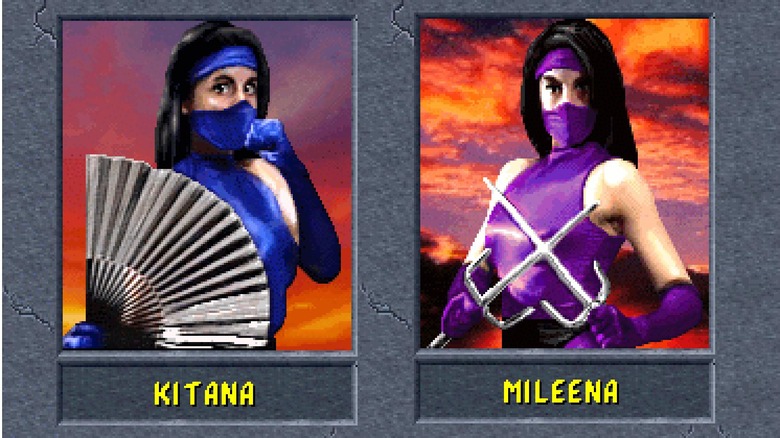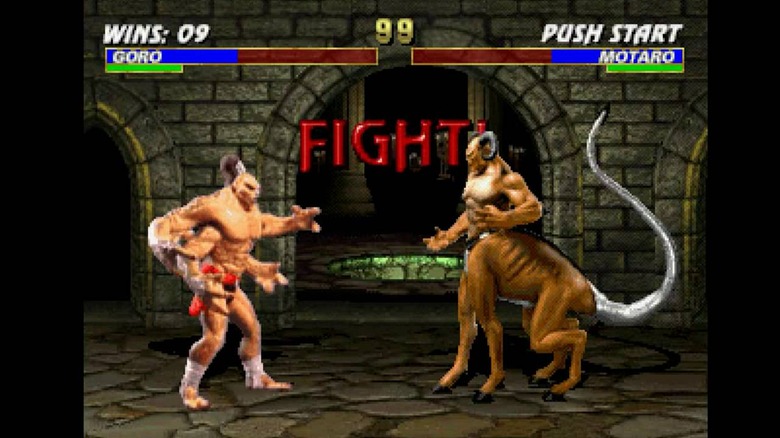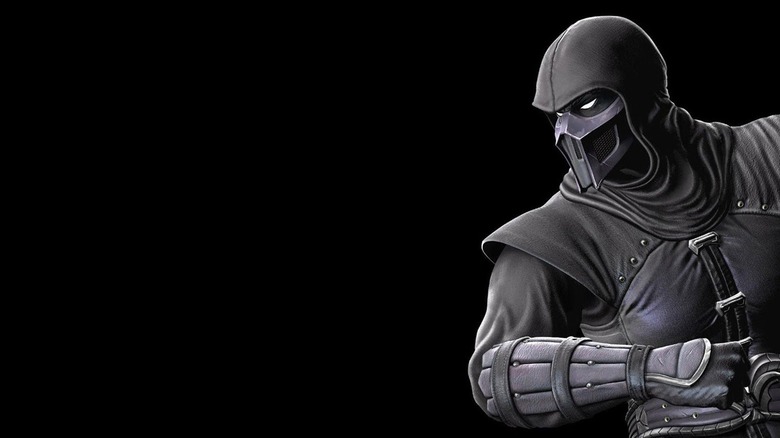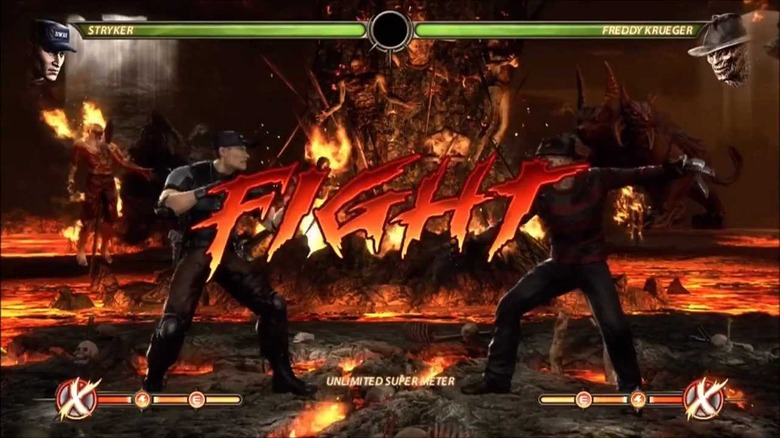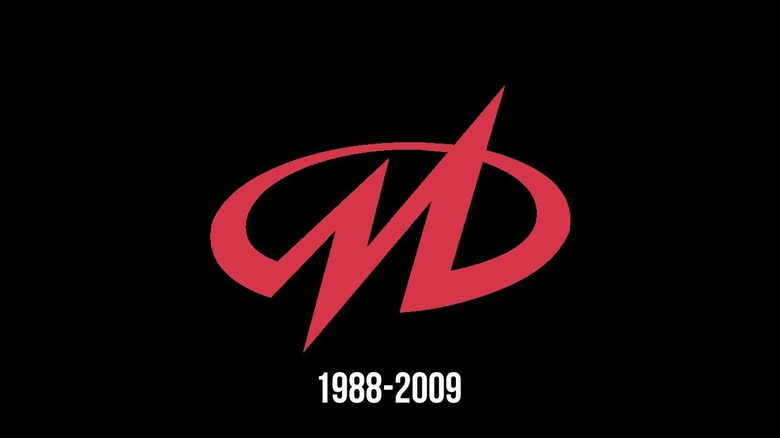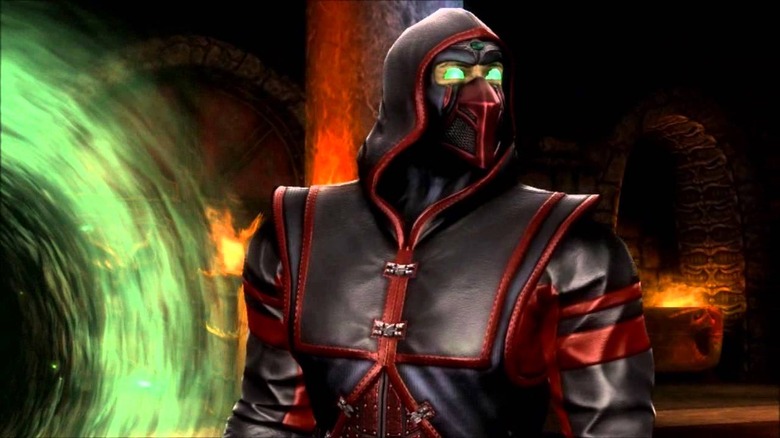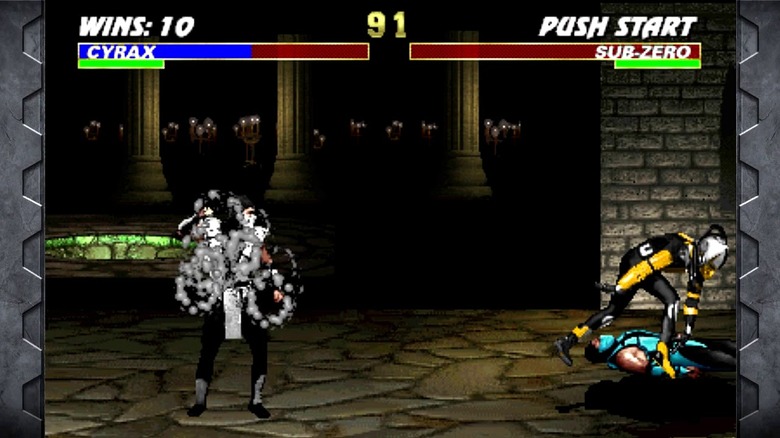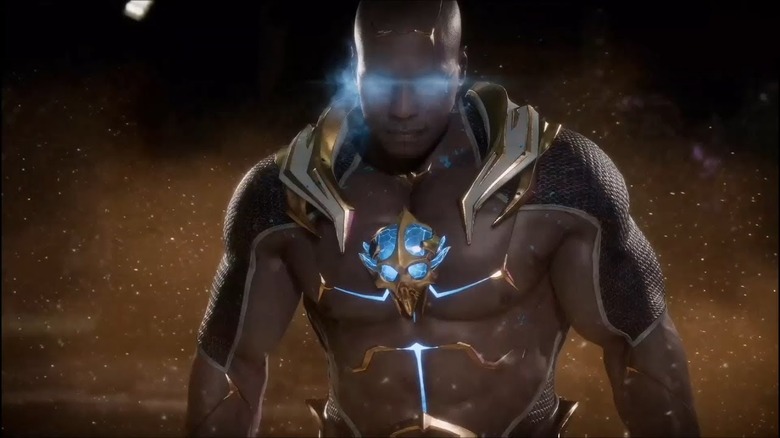The Untold Truth Of Mortal Kombat
If you were playing video games in the '90s, the Mortal Kombat franchise was nearly inescapable. The games showed up in arcades and on consoles, the movies brought our favorite MK characters to life, and discussion of Mortal Kombat leapt from the pages of GamePro and Electronic Gaming Monthly into the national dialogue, with politicians and parents alike scrutinizing its violent nature. Whether you've played the games, watched the films, or seen coverage of the series on CNN, you've likely interacted with Mortal Kombat in one form or another. And perhaps you think you know everything there is to know.
But there's far more to Mortal Kombat than what lies on the surface. There are countless stories about the property that you might not have read in your favorite game magazine or heard about on the news. These tales look more closely at how Mortal Kombat came to be, the bumps in the road it experienced along the way, and where it stands today. And we think they're pretty entertaining, so we're going to tell them.
Ladies and gentlemen: the untold truth of Mortal Kombat.
The first Mortal Kombat was developed in just ten months
The world of game development looks a whole lot like movie production these days. There are games with enormous budgets, both for development and for marketing. There are directors piecing together important cinematic moments, along with writers who are putting together a script that tells a compelling story. And the entire process, from start to finish, can take years. Heck, you only have to look at The Last Guardian from Sony to get a sense of how long a game can be in development: that one took over nine years.
The very first Mortal Kombat game, though, didn't take much time at all to complete. The team knocked it out in ten months.
When you think about it, that fact is fairly stunning. The folks at Midway Entertainment not only managed to create a competent fighting game in that amount of time, but also dreamed up interesting characters and a vibe that made the game stand out from everything else on the market. Well done, Midway!
Wait ... Midway doesn't exist anymore? Okay, we'll get to that later.
Blood was removed from the console version of Mortal Kombat
When you think about it, just about any fighting game is inherently violent. Whether your weapon is a fist, sword, or magic power, you're using that tool to inflict damage on your opponent. A roundhouse kick to the face doesn't feel like a pleasant kiss, and taking a katana to the abdomen doesn't tickle. This makes the backlash Mortal Kombat received for including blood all the more confusing. But it happened.
The first Mortal Kombat featured blood in a number of different ways. Blood shot out when a character got punched or kicked, or caught a Scorpion spear in the gut. And even more blood sprung out like a fountain during a Fatality, a final blow that could result in a head being ripped off or a spine being pulled from someone's body. Blood was heavily featured in the arcade version of Mortal Kombat, but when it came time for MK to hit home consoles, both the SNES and Genesis versions of the game featured sweat instead of blood.
Sort of. Owners of the Sega Genesis could actually use a cheat code that re-enabled real, red blood in MK. That version outsold the SNES version 5 to 1.
Secret menus were found in MK's arcade versions in 2015
It's amazing how long video game secrets can remain hidden. For instance, did you know that a certain Punch-Out!! easter egg remained hidden for close to thirty years? It seems that, if developers are dedicated to keeping quiet, players will take decades to uncover everything lurking under the surface in a game.
Like the hidden menus discovered in older Mortal Kombat arcade machines, which weren't discovered until 2015.
According to The Verge, secret menus can be activated in Mortal Kombat, Mortal Kombat 2, Mortal Kombat 3, and Ultimate Mortal Kombat 3. And in these menus, players have discovered that they can perform diagnostics tests, watch each character's in-game ending, and make edits to the high score lists on the machine. Even cooler, the menu in Ultimate Mortal Kombat 3 has options for enabling hidden characters, and even includes a knock-off of popular arcade classic Galaga. Why? No one knows for sure. It seems that the Mortal Kombat development teams were just having some fun.
It took an awfully long time for players to figure out how to access these menus. So long, in fact, that it almost makes you wonder what's hiding in some of the newer Mortal Kombat games ...
Mileena once appeared in Playboy Magazine
It's hard to deny that the Mortal Kombat series has leaned into the sex appeal of its female characters. One only has to look at the revealing outfits worn by Mileena, Kitana, and Jade to get the message. And Mortal Kombat isn't the only fighting game to do this, either. We're looking at you, Dead or Alive series.
But Mortal Kombat did take things a little further than some of the other hyper-sexualized fighting games in that it allowed one of its characters, Mileena, to appear in Playboy.
"Part of the thrust of the piece is that gaming is not just for kids," said Playboy's Scott Alexander, who was a senior editor at the time. "We want to cover them from [the] perspective of an adult who has a life. We're not writing video game reviews for kids who play five hours a day. We're writing for the grown-up who may play five hours a week, if that much."
Unfortunate phrasing aside, Alexander did seem to hit on a trend that would inevitably manifest itself into reality. Today, video games are just as much for adults as they are for kids. Did we need a barely clothed Mileena to make that statement? That's debatable. But Mortal Kombat was never really a kids' game to begin with. And while you won't find its characters gracing pin-up magazines today, Mortal Kombat is leaning just as hard into another kind of adult content: gratuitous violence.
Mortal Kombat helped spur the creation of the ESRB
Before almost every video game trailer, we're treated to a short one-to-two-second reminder that video games have changed a lot since the Atari days. You've probably heard a quick "Rated T for Teen" in those trailers, slipped in before the part you actually want to watch begins. It's there thanks to the ESRB: the Entertainment Software Rating Board. And given what we've talked about already, it might not surprise you to know that Mortal Kombat is the reason the ESRB exists today.
Mortal Kombat's blood, gore, and violence made the game a favorite for fighting game fans. It also drew the ire of both politicians and parents of younger children who felt the game could be a negative influence, and could potentially inspire violence in those who played it. The dialogue around Mortal Kombat — and video games in general — got to the point where the industry feared government regulation. In order to stave that prospect off, several large video game companies came together in 1994 and created the ESRB in as a form of self-regulation.
The ESRB rates games and puts stickers on the box, and the government doesn't tell video games what they can and cannot include. It's worked so far!
Fans started a petition to add Scooby-Doo's Shaggy to Mortal Kombat 11
The internet is a funny place, isn't it? Never in a million years would you think of adding a childhood cartoon character like Shaggy from Scooby-Doo to a game like Mortal Kombat 11, even as a joke. Never would you believe that hundreds of thousands of people would rally to that cause. And never would you believe that, just for a moment, it looked like the creator of Mortal Kombat himself was giving it serious thought.
But that all happened in early 2019. Somehow, someway, a ridiculous internet meme collided with a video game's marketing push. And it seemed as though we might actually get Shaggy in a Mortal Kombat game.
It seemed insane at first. Ed Boon, the director of Mortal Kombat 11, even dismissed the idea of Shaggy in Mortal Kombat when it first entered his Twitter feed. But over the course of a few days, a Change.org petition for Shaggy in MK11 blew past 300,000 signatures. And Ed Boon himself seemed to have fun with the concept, tweeting out mock-ups of Shaggy in the game, as well as photos of Scooby himself as a potential sidekick.
Eventually, though, the dream came to an end. On a Mortal Kombat 11 reveal stream, NetherRealm Studios community manager Tyler Lansdown ended the madness, stating, "Shaggy will not be in the game, at all, ever."
Or maybe that's what they want us to think.
Ronda Rousey is the voice of Sonya Blade in Mortal Kombat 11
Sonya Blade in Mortal Kombat 11 differs from other females on the roster in a few very noticeable ways. Her clothing, for starters, is not remotely as revealing as the duds you'll find on characters like Mileena and Kitana (at least not anymore). And there's an aura about Sonya Blade, a sense that she believes she's the toughest competitor on the entire roster. There's a good reason for that.
It's because this iteration of Sonya Blade is voiced by none other than Ronda Rousey, the former UFC fighting champion and current professional wrestler.
"Sonya Blade was the first, like, kick-a** girl that I saw come onto the scene," Rousey said. "I've always admired her, and admittedly kind of emulated her, you know, in my own way. Now I get to try and be her."
Rousey has some history with the Mortal Kombat series in the past, having played the older games — like so many of us did — as a kid. Now she has the opportunity to provide the voice for a character who is not unlike her. Sonya Blade, much like Ronda Rousey herself, is tough. Sonya, like Rousey, also isn't afraid to talk a little trash.
Whether Sonya can back it up as well as Ronda Rousey, though — that'll depend on you, the player.
After the Columbine shooting, President Bill Clinton name-checked Mortal Kombat as a game that made the shooters violent
It might not surprise you that the creation of the ESRB did not stop politicians from blaming video games when they saw fit. They got what they wanted — ratings on game boxes — but when violent events became news headlines, some were quick to mention video games as a potential explanation.
One of those politicians was former President Bill Clinton.
After the horrific shootings at Columbine High School in 1999, President Clinton took to his weekly radio address and laid the blame at the feet of video game companies, who he felt should fight the urge to put out violent products.
"Video games like 'Mortal Kombat,' 'Killer Instinct,' and 'Doom,' the very game played obsessively by the two young men who ended so many lives in Littleton, make our children more active participants in simulated violence," Clinton said.
Decades later, history is repeating itself, and politicians are once again turning to video games as a scapegoat for violent actors — despite evidence of the contrary.
Midway, the company behind Mortal Kombat, was sued by several actors from the games
The development of Mortal Kombat was interesting in a variety of different ways, but the creation of its characters was simply ahead of its time. Midway didn't draw the characters used in-game; instead, they were scanned in using real actors. The animations were actually movements performed by those actors, and they lent an air of authenticity to every kick and punch you saw during the game. Those actors, like those in the movie business, got paid — just not as much as they wanted.
A 1997 lawsuit saw three of the actors from Mortal Kombat and Mortal Kombat II charging that Midway had shortchanged them. Philip Ahn, Elizabeth Malecki, and Katalin Zamiar (who modeled Shang Tsung, Sonya Blade, and Kitana/Mileena/Jade, respectively) felt they had only granted use of their likenesses for the arcade versions of Mortal Kombat. The home console versions of the games, they felt, were completely outside of the agreements they signed. Therefore, they felt they were owed more money.
They lost. The judge in the case sided with Midway, awarding the company a summary judgment.
Goro was made of clay
How can you get around actors and all that pesky money they want from you? Stop using real people!
In all seriousness, finding someone who looks like Mortal Kombat character Goro would be difficult. He's absolutely enormous, not to mention the fact that has four arms. So when it came time for the folks at Midway to put Goro in the first game, they came up with a unique solution.
Midway used what is called "stop-motion animation" to capture Goro's movements. They moved clay Goro into a pose, captured an image, and then adjusted his pose before capturing another image. And they did this repeatedly. All of the pictures strung together created the animations used by Goro in the game, which looks like quite the feat when you see the finished product in action.
The next time you play with Goro in Mortal Kombat, stop for a moment to appreciate this clay model fighting along real-life people. Except for Motaro. We're pretty sure he's not human.
Noob Saibot name is a tribute to two Mortal Kombat creators
You may have crossed paths with him in Mortal Kombat II. If you didn't, you got the chance to play as him in Ultimate Mortal Kombat III. He's dark and mysterious, and enjoys long fights on the beach (or pretty much anywhere). He's Noob Saibot, and his story is fascinating.
The lore behind Noob might twist your mind in knots. According to the Mortal Kombat people, there have been a few different Sub-Zeroes. Noob was the first, appearing originally in the original Mortal Kombat. The Sub-Zero that exists now? That's his little brother. And Noob is just Noob now.
How he got his name, though, is the best part about Noob Saibot. His moniker is comprised of the last names of two Mortal Kombat creators: Ed Boon and John Tobias. Simply reverse the letters in both Boon and Tobias and, ta-da! You've got it.
The existence of Noob Saibot begs the question: is it cooler to have a video game character named after you, or a video game gun named after you?
The 2011 Mortal Kombat reboot was effectively banned in Australia
Australia has always has a weird relationship with video games. The country has been notorious for banning video games, and in a four-month period in 2014, Australia blocked the sale of 220 separate video game titles. Games are also ridiculously expensive in the country due to a number of factors.
It didn't come as much of a surprise, then, that 2011's Mortal Kombat — with its violent premise — ran afoul of the government in Australia, which refused classification of the game.
To be clear, refusing classification doesn't make obtaining or playing the game illegal. Someone in a suit isn't going to come to your door and demand you hand over your copy of Mortal Kombat. What it does, however, is prevent the game from being advertised and sold in Australia. It's all but a ban, as consumers in the country are forced to import the game from other countries. And that is incredibly inconvenient, especially when you just want to play a little MK with your friends.
Warner Bros. obtained the rights to Mortal Kombat after Midway Games filed for bankruptcy
Midway Games was the company behind several huge series in the '90s. In addition to the Mortal Kombat franchise, Midway laid claim to arcade and console classics like NBA Jam, NFL Blitz, the Cruis'n racing series, and Hydro Thunder. It was hard to go to an arcade or shop the video game section of a store without seeing a Midway title, and the success was warranted: Midway games were fun to play.
Unfortunately, the good times didn't last forever for Midway. In 2009, after over 50 years in business, Midway filed for bankruptcy, with most of its assets going to Warner Bros. Interactive Entertainment.
It was certainly sad to see Midway close up shop, but its demise didn't spell disaster for the Mortal Kombat franchise. Warner Bros. has been a fairly good steward of the IP as shown by its 2011 release of the Mortal Kombat reboot. Many MK characters also starred in a mash-up fighting series, Injustice, which uniquely pitted those in the Mortal Kombat universe against characters from the DC comics universe.
And let's be honest: who doesn't want to see Sub-Zero fight Batman?
The character Ermac was born out of error catching
We've already told you about Noob Saibot, a character created using the names of Ed Boon and John Tobias. But did you know that there's another longtime Mortal Kombat character with a similarly interesting backstory? This one wasn't built to pay homage to a person. Rather, he was a sort of joke come to life, a reference to a bit of code used by Ed Boon in the original Mortal Kombat.
His name is Ermac — or, as many knew him before, ERMACS.
ERMACS was a phrase coined by Ed Boon as a shortening of "error macro." And in Mortal Kombat, Boon's ERMACS code was built to help him catch errors during the game's development. Early version of the game made several mentions to the ERMACS code, and it didn't take long for the games press to speculate about the possibility of a hidden character. The rumors were helped along by a letter to EGM after Mortal Kombat's release, which contained a copy of a doctored photo with a fake Ermac.
Ed Boon tried to tell everyone that Ermac wasn't a real character. In fact, a message included in Mortal Kombat 2 stated very clearly that "Ermac does not exist." But that just fueled the fire. And in Ultimate Mortal Kombat 3, Boon finally relented and added Ermac to the roster as a playable character.
Mortal Kombat 11 will be the first MK game on a Nintendo system since 2007
The next MK game in the series, Mortal Kombat 11, shocked a lot of people by announcing it would have a version ready to go — at the same time as its other platform releases — for the Nintendo Switch. And as you might recall, the history between Mortal Kombat and Nintendo is one fraught with censorship, formations of software review boards, and the sense that Nintendo systems weren't getting the best Mortal Kombat had to offer.
Case in point: there hasn't been a Mortal Kombat game on a Nintendo machine since Ultimate Mortal Kombat 3 got a port to the Nintendo DS in 2007.
To its credit, the Nintendo of today is a far cry from the Nintendo that tried to keep everything squeaky clean for the kids in the 1990s. There are pretty much no rules these days, which allows games like the ultra-violent Wolfenstein 2: The New Colossus to land on the Switch. And that is good news, because it means that the Switch won't be getting a gimped version of Mortal Kombat 11, a game that promises to be more gruesome than any Mortal Kombat game that's come before it.
Welcome back, Nintendo.
Prepare for new Kombatants
The Mortal Kombat roster is already pretty substantial, which is why the team behind the series takes care when adding new characters. Fresh faces only come around when it makes sense for the role that character can play in the game, and in the larger Mortal Kombat mythology.
But if you're tired of playing with the same cast of characters, we have some good news for you. Mortal Kombat 11 is adding at least one new character, and his name is Geras.
Geras is unique in the world of Mortal Kombat in that he can effect the flow of time. So here's a nightmare scenario for you: imagine trying to rally against an opponent who is using Geras, only to see him use one of his new abilities, Lost Time. That subtracts 30 seconds from the match timer, and suddenly, you could be as little as nine seconds away from a loss. Geras also has another ability called Spare Time, which adds 30 seconds to the clock. Are you up on health, simply hoping to run out the clock? That extra 30 seconds could help Geras cut you down to size.
Consider that, and the fact that Geras has another ability called Reawakened — which he can use to bring himself back to life — and it's clear Geras will be a real force on the MK11 roster.
Another new fighter coming to Mortal Kombat 11 is the Kollector, a bizarre warrior from Outworld who has six arms. You'd better keep an eye out as those extra limbs tend to pull out a variety of weapons from his backpack of otherworldly artifacts.
Cetrion is an Elder God making her Mortal Kombat debut as well. She basically looks and fights like Poison Ivy mixed with the Avatar. Fans who were hoping that Tremor would make a return for MK11 will be happy to see that Cetrion uses a lot of rocks in her elemental offense. It looks like Johnny Cage and the rest of the classic characters are going to have their hands full.

